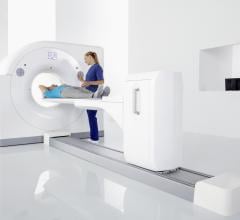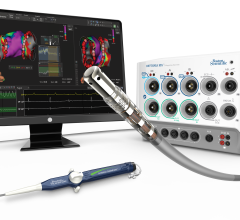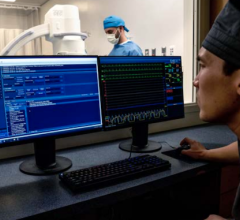November 17, 2009 — The recent discovery of 3,500-year-old Egyptian mummies showing signs of hardening of the arteries indicates that heart disease is not just a condition found in modern humans as commonly believed.
November 18, 2009 — Results of preclinical studies with CXL-1020 demonstrate beneficial effects across the board on the treatment of acute decompensated heart failure (ADHF). All three major facets of the pathophysiology — contractability, relaxation and vascular load — showed improvements with no significant safety liabilities.
November 21, 2009 – The first randomized intracardiac arrest cooling study performed using a intra-nasal cooling method showed promising results. Findings included much faster and earlier cooling in treated patients and significantly higher neurologically intact survival to discharge rate in many patients.
Providing exceptional cardiovascular care for patients to achieve the best possible outcomes is the number one goal for ...
November 21, 2009 — A drug used to treat erectile dysfunction may improve heart function in children and young adults with single ventricle congenital heart disease, according to researchers from The Children’s Hospital of Philadelphia.
November 21, 2009 – The Food and Drug Administration (FDA) recently announced that it is reviewing data from a study suggesting patients using the drug sibutramine may have a higher number of cardiovascular events than patients using a placebo.
November 29, 2009 - A new advanced visualization and decision support software upgrade is designed to improve management of CT stroke protocols and 3D or 2D viewing. It also provides electronic medical record (EMR) integration.
Cardiac positron emission tomography (PET) is growing in popularity among cardiologists because it provides the ability ...
November 24, 2009 - Seventy million dollars in grant money will go to community college training programs for health information technology professionals, and $10 million is designated to develop educational materials to support these programs.
November 24, 2009 – European CE mark clearance was granted this week for BridgePoint Medical’s coronary and peripheral chronic total occlusion (CTO) crossing system comprised of the CrossBoss CTO Crossing Catheter and the Stingray CTO Re-Entry System.
November 24, 2009 - The academic and research communities can access free 2D/3D Windows-based software for reviewing imaging data from CT, MR, PET, ultrasound and X-ray.
When performing radiofrequency (RF) ablation to treat cardiac arrhythmia, medical professionals must balance the safety ...
November 24, 2009 – New imaging client-server technology is designed to create efficiency and ease of use from any location. With an unlimited number of installed clients, there can be 3/10/20 concurrent users, depending on server hardware configuration and system load.
November 23, 2009 – Using less lytic drug and offering faster clot dissolution than traditional deep vein thrombosis (DVT) treatments, EKOS Corp. launched the EkoSonic MACH4e at the recent VEITH Symposium in New York.
November 23, 2009 – The U.S. Food and Drug Administration (FDA) Nov. 20 approved Revatio (sildenafil) Injection, an intravenous formulation of Revatio, for the treatment of adult patients with pulmonary arterial hypertension (WHO Group I) to improve exercise ability and delay clinical worsening.
Change Healthcare Cardiology Hemodynamics is an integrated hemodynamic monitoring system for monitoring vital signs and ...
November 21, 2009 – Endovascular repair of a ruptured abdominal aortic aneurysm (EVAR) is superior to open repair, according to a study data released Nov. 18-22 at the VEITH Symposium in New York. The study found EVAR is best in patients with favorable anatomy and in centers that have access to vascular surgeons.
November 18, 2009 — A new, reversible blood thinner did not prove superior over placebo for its primary endpoints of heart attack and need for revascularization, but it did reduce in-stent blood clots. Researchers reported the findings in a late-breaking clinical trial presentation at the American Heart Association’s Scientific Sessions this week.
November 20, 2009 – A new system that provides interactive road-mapping for interventional radiology, angiography, and vascular surgery, allows the physician to electronically draw or telestrate during live fluoro on the touch-screen monitor with a stylus. The telestration can then be used as a road-map to guide a catheter or perform an intervention during live, unsubtracted fluoro.


 December 01, 2009
December 01, 2009












